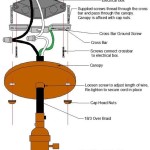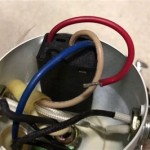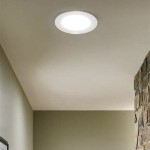Essential Aspects to Consider When Choosing Can Ceiling Lights LED
Can ceiling lights LED have become increasingly popular due to their energy efficiency, longevity, and versatility. They offer a wide range of styles, color temperatures, and functionalities to complement any room's design and ambiance. Here are some essential aspects to consider when selecting can ceiling lights LED to ensure an optimal lighting solution:
1. CCT (Correlated Color Temperature)
CCT refers to the color temperature of the light emitted by the LED bulb. It is measured in Kelvin (K) and ranges from warm white (2700K-3000K) to cool white (4000K-5000K). Warm white light creates a cozy and inviting atmosphere, while cool white light promotes alertness and focus. Choose the CCT that best suits the purpose and ambiance of the room.
2. Beam Angle
The beam angle determines the spread of light from the fixture. A narrow beam angle (10-30°) creates a concentrated spot of light, highlighting specific areas or objects. A medium beam angle (30-60°) provides a wider illumination, suitable for general room lighting. A wide beam angle (60-120°) distributes light evenly across a large area.
3. Dimmability
Dimmable LED can ceiling lights allow you to adjust the brightness level to create different moods and atmospheres. Dimming can be achieved through wall-mounted dimmers or remote controls. Consider dimmability if you want to have flexible lighting options for different occasions.
4. Housing and Trim
The housing of the can ceiling light is the part that fits into the ceiling. It provides structural support and includes the LED bulb socket. The trim is the decorative element that covers the housing and is exposed to the room. Choose a housing and trim that complements the room's style and decor.
5. CRI (Color Rendering Index)
CRI measures how accurately the light source reproduces colors. A high CRI (90+) ensures that colors appear vibrant and natural. This is important for areas where color accuracy is crucial, such as kitchens, art galleries, or retail stores.
6. Energy Efficiency
LED can ceiling lights are highly energy-efficient, consuming up to 85% less energy compared to traditional incandescent bulbs. Look for lights with a high lumen-per-watt (lm/W) ratio, which indicates greater light output for the same energy input.
7. Lifespan
LED bulbs have an exceptionally long lifespan, typically ranging from 50,000 to 100,000 hours. This means you won't have to replace the bulbs as frequently, saving you time and money in the long run.
8. Smart Features
Some can ceiling lights LED offer smart features such as voice control (e.g., Alexa or Google Home compatibility), scheduling, and remote control via smartphone apps. Smart lighting can enhance convenience and enable you to create automated lighting scenarios.

4 6 8 Inch Led Recessed Ceiling Lights 3cct

Wafer Lights Vs Can Everything You Should Know

Recessed Lighting Guide Lowe S

Recessed Lighting The Home Depot

Recessed Lighting Parmida Led Technologies

Led Ceiling Lights For Kitchen Bedroom Living Room Slb Blogs

Led Recessed Can Lighting Premier

Designers Fountain 5 In And 6 White 4000k Integrated Led High Lumen Recessed Can Light Trim Rb6whwh9t1440 The Home Depot

Can Vs Canless Recessed Lighting Which To Choose

8 Pack Led Recessed Lighting 4 Inch Ceiling Lights With Junction Box 5 100 Dimmable Etl Certified 2700k Soft White Com
Related Posts








